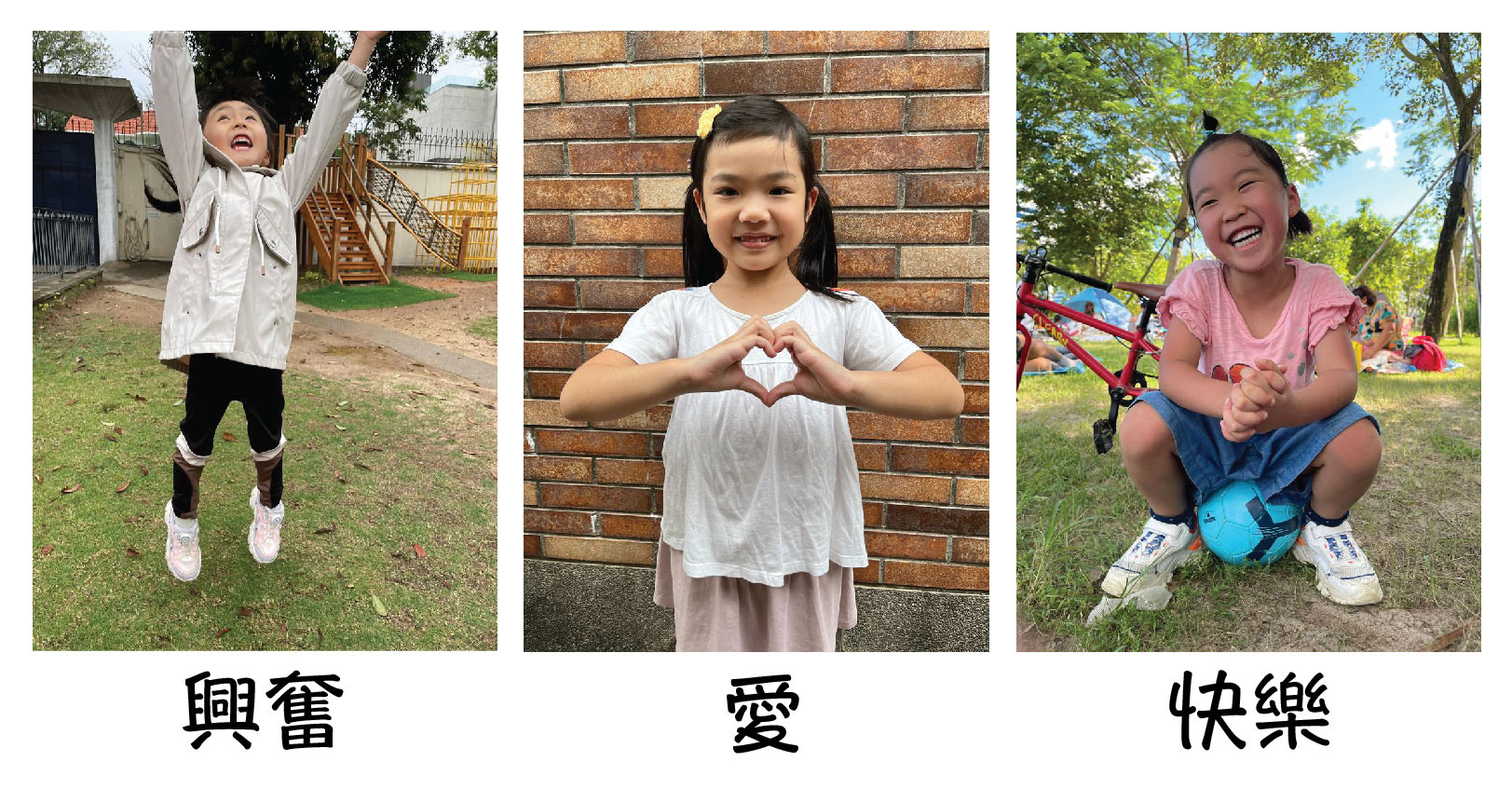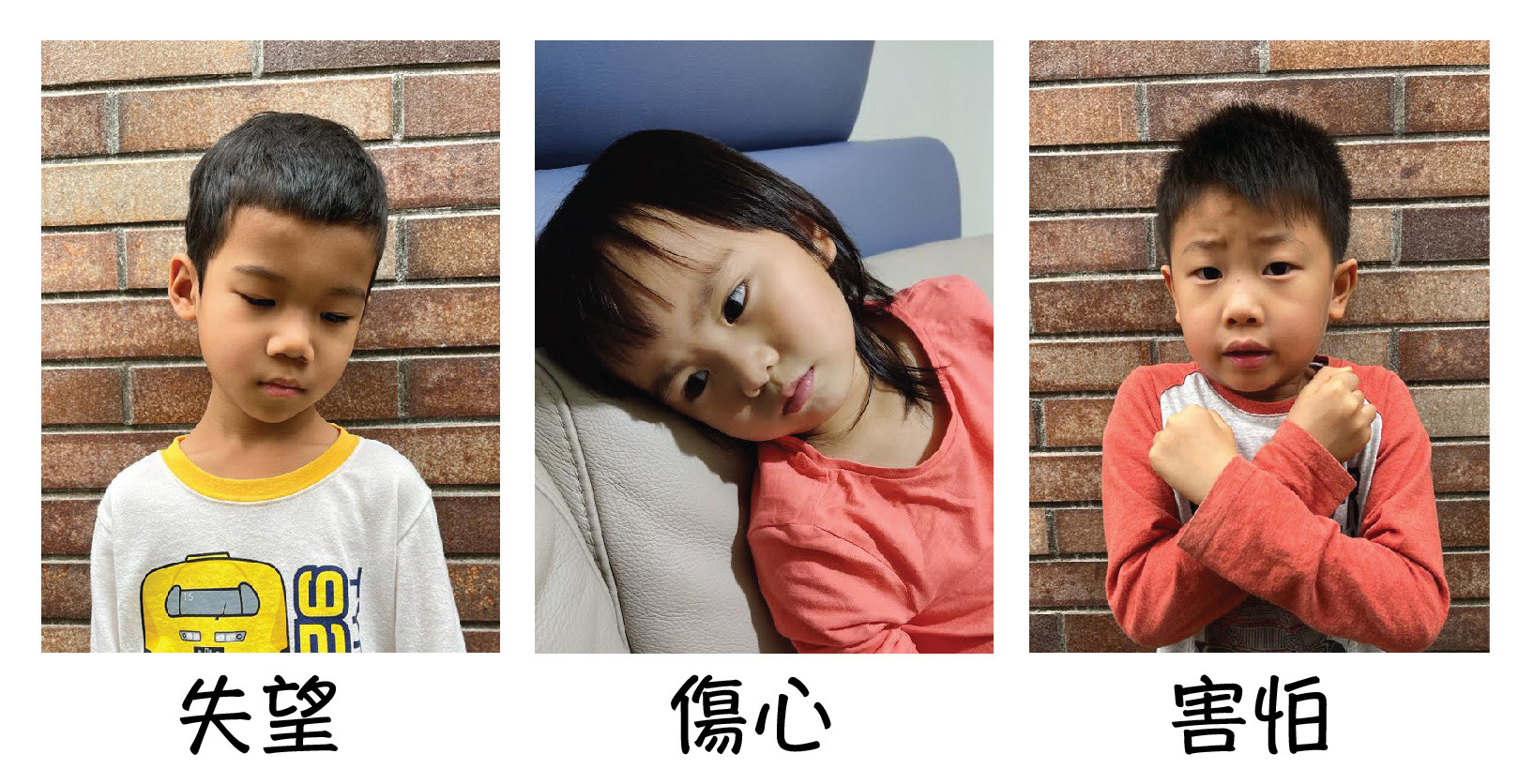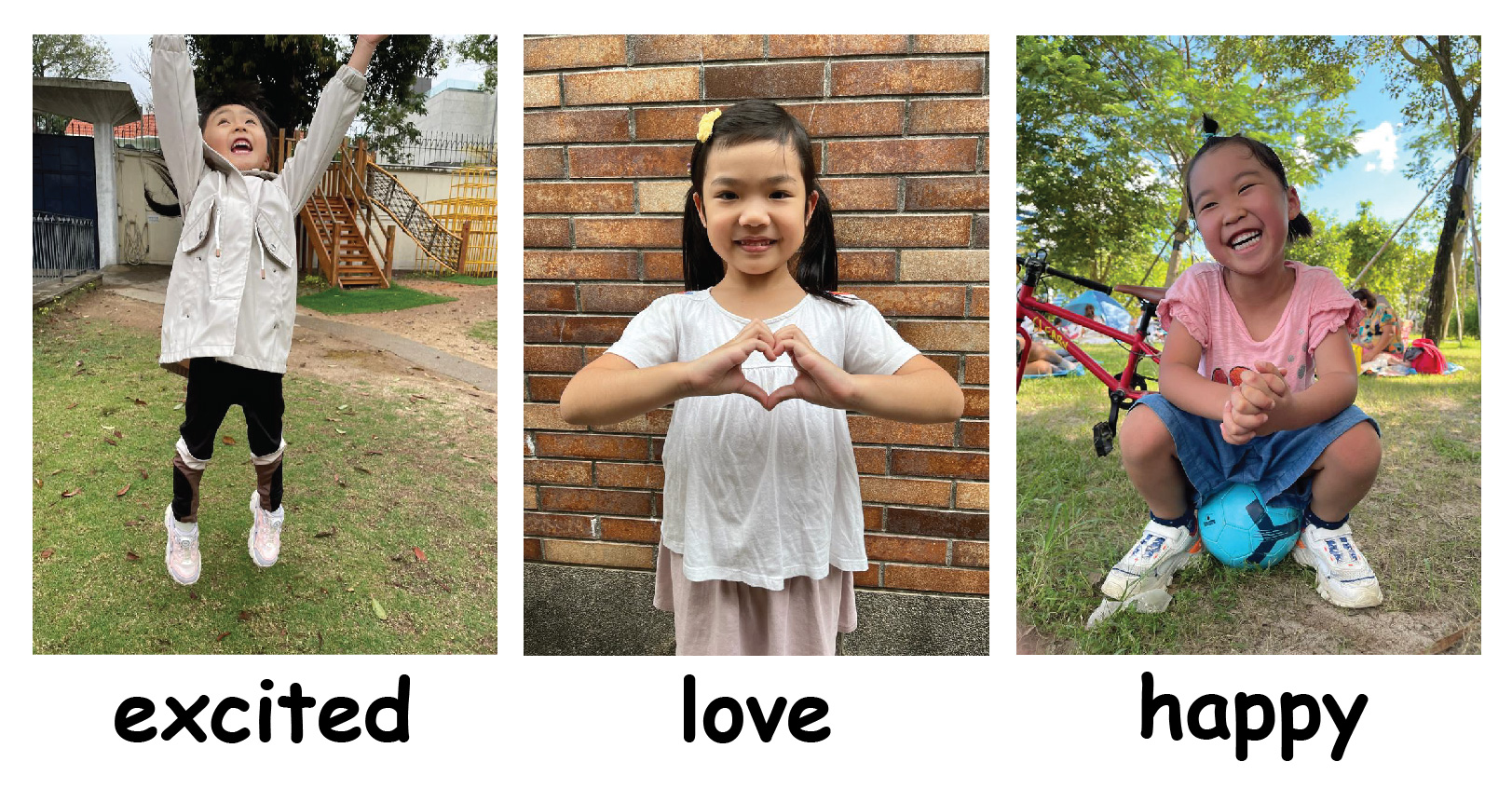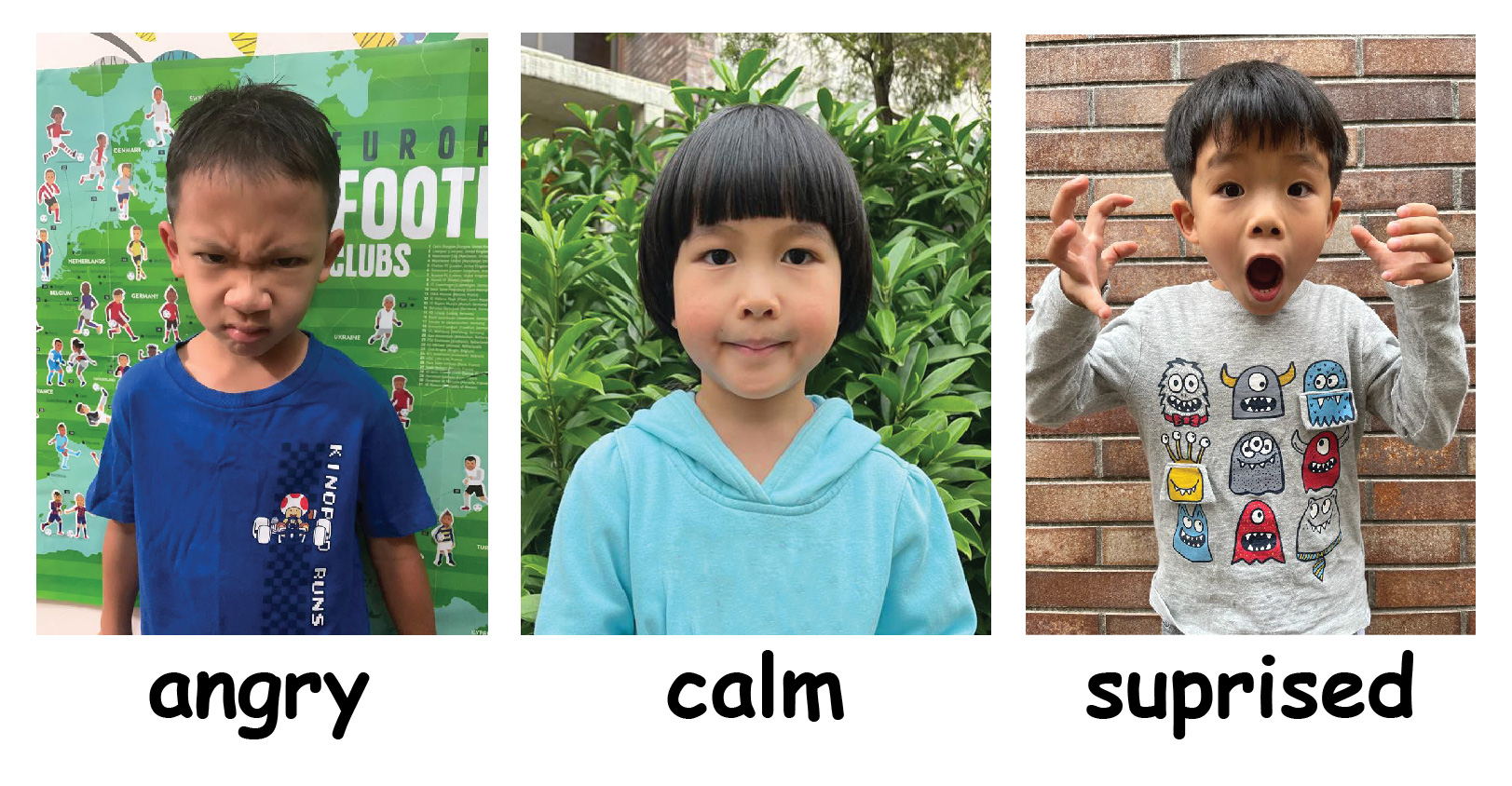Share your own set of unique Feelings Cards and tag us @hkmrda #Letsmakefeelingscards
Or share them on our facebook #Letsmakefeelingscards
Parent-child activity: Making Feelings Cards to help children develop emotional literacy in a post COVID-19 world
Ralph Yau and Jeannie Leung
In the past two years, most children have had less social interactions. The use of masks mean that children can only see partial facial expressions through observing people’s eyes, eyebrows and foreheads. To communicate, we pick up cues from people‘s entire facial expressions and body language to learn what others may be feeling. Under this prolong period of mask wearing, the development of children‘s emotional and social intelligence have been greatly affected. Whilst we hope everything will return to normal as soon as possible, it is important that we take proactive steps to address this gap in our children’s development before epidemic restrictions are progressively relaxed.
To help children in their emotional and social development, we recommend that parents make Feelings Cards with children at home. This parent-child activity can be done at home to help children develop a better awareness of their own feelings and foster their social skills. We suggest inviting your relatives and friends to join in this activity so children can practice identifying and communicating their feelings as well as learning about others’ feelings.
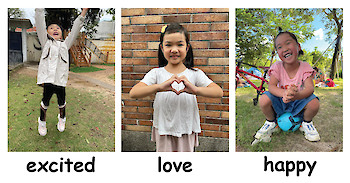
Making Feeling Cards together
- When your child experiences certain emotions, ask how your child is feeling. If they agree, take a picture capturing their facial expression and print it out. For younger children, you can go through some old photos and give them an option of two or three photos of different feelings to print out.
- Once you have identified the feelings, write down the names of those feelings (writing is preferable to typing and printing).
- Common examples of feelings are happiness, excitement, sadness, anger, love, calm, fear, surprise, disappointment, etc.. Through this exercise, children can gradually identify more feelings. In recent studies, researchers at University of California, Berkeley have identified up to 27 states of human emotions.
- Memory game: If the child can recall and act out the feelings they experienced before, they can make corresponding expressions or body language. Invite your child to take photos, print them out and write the feelings on the picture.
We have noticed that most of the Feelings Cards in the market are drawings, some of which uses cartoon characters, emoticons or anthropomorphic characters (e.g. animals with human characteristics).
For children, especially young children, these drawings may be too abstract for them to grasp and they are unable to relate to these figures. Using photos of people are more interesting for children as they can relate to these images better. It is important that these images are grounded in reality so it provides a concrete frame of reference. From your daily life, you may find that children often like to study photos of themselves, family members and friends. They identify with these photos more and can draw on their own experience and familiarity with these individuals to better understand the feelings conveyed in these images.
We strongly suggest making individualised Feelings Cards with your children at home rather than purchasing ones from stores. Going through the process of making these Feeling Cards is a great learning experience for children. The Montessori approach stresses the importance of the child proactively constructing and creating as means of their learning. Children derive more value from the process than the result of the end product.
The process of creating Feelings Cards allows a child to make sense of their emotions, identifies their feelings and lead them to develop strategies to cope with their feelings:
- Experience the feeling – For example my best friend says goodbye and leaves the playground, I start to cry and my body starts to shake.
- Perception – I become aware that when my friend announced she was leaving, I started crying. My brain and nervous system try to make sense of this experience by organising, identifying and interpreting the sensory information.
- Concept formation – My mum may help me identify my feeling through her words, “Are you feeling sad?” When we get home, mum takes out a photo of me crying, she writes the label, “sad” and she reads it with me. We discuss the feeling I had when I was at the playground. When language is connected to a perception, a concept is formed.
- Memory – I remember this incident at the playground. I may recall this from time to time and remember I felt sad when my friend said goodbye at the playground.
- Reasoning – I think about my feelings and I connect sadness to other past experiences. These connections allow me to make generalisations and draw conclusions of my feelings and the feelings of others.
- Emotional intelligence – Mum shows me that when I feel sad, I can take a walk or give her a hug to help with my feeling of sadness.
- Managing and handling my emotions – We go to the park again today. When my friend said goodbye, I felt sad again. I also notice that my friend is a bit sad too, but not as sad as me. I remember my mum showing me how I can help with my sad feeling. When I started crying, I shared with my mum that I feel sad. She asked me whether I would like to go for a walk or a hug, I chose to go for a walk.
- Feedback – After I go for a walk, I felt less sad. Mum also noticed that I smiled after our walk together, my sad feeling went away.
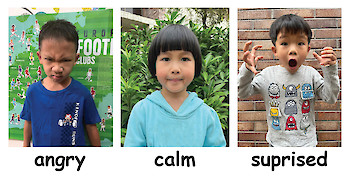
The above example shows how we can work with our children through their feelings. Our role as adults is to help children identify their feelings and be a positive role model in processing our feelings.
- It is important for children to be aware that everyone has feelings. When we experience feelings, those feelings are acknowledged and respected by others.
- We first learn to recognise and differentiate between different feelings as the first step to developing a better understanding of our own feelings and needs.
- Provide a safe space to express and share our own feelings. With practice, we and our children become more articulate in expressing ourselves with more clarity so that others can understand us better.
- With time, we discover that we develop competence to cope with our feelings. With the right tools, we learn to express and self-regulate our own feelings in a positive way.
- Recognise situations when we may experience strong feelings, watch out for cues that triggers an emotional response which lead to strong feelings. We can learn to express our feelings in appropriate ways, when to share them and with whom we can share them with.
- Once we have a good understanding of our feelings, we develop the ability to recognise others’ feelings.
- Recognise and understand that feelings are subjective. Different people can have different feelings towards the same event and can have different ways of expressing their feelings.
- With this understanding, we become more sophisticated in discriminating between different feelings and we equip ourselves to handle these feelings better.
- Respect that others have feelings so we can cultivate a heart of empathy
With these Feelings Cards, you can also play the below games as extension activities:
1. When your child experiences negative feelings and emotions...
Ask your child how he feels, and let him choose a Feeling Card. Once you recognise the feeling, think of ways to manage this emotion and to express it in a more positive way. Adults should do the same when they have negative emotions.
2. Act out the feeling
Flip the Feeling Card over with the photo facing down. Take turns to flip one card each time, take turns naming the feeling and make a corresponding expression.
3. Guess the feeling
Take turns to chose a Feeling Card without showing it to others. Make the corresponding expression from the Feeling Card and see if others can guess which Feeling Card it is.
4. Pairing
Print out two sets of Feeling Cards (you can have the two different sets printed on cards of different colour or pattern on the back). Take turns turning over two cards at a time. If you find a pair, keep that pair of cards.
5. Identify positive and negative emotions
Divide the cards into positive and negative emotions. Discuss why they are categorised as such.
6. Tell stories about your own experiences
Take turns choosing a Feeling Card without showing it to others. Think of a time when you had that Feeling and share that story with others. Others can guess what feeling it is.
7. Support friends with negative emotions
Pick a negative feeling, discuss how you can show support to each other when you experience that feeling. You may also wish to role play as to how you can support each other.
8. Make books or use picture books to tell stories and share feelings.
This month, let‘s make it a goal to create Feelings Cards together with our children. When we have a better understanding of our feelings, we are also able to recognise each other’s feelings. With this acceptance, we learn to become more respectful of each other. This fosters more harmonious interactions between individuals and together, we can create a more peaceful society.
#letsmakefeelingscards #親子製作感受卡 #蒙特梭利 #montessori #和平教育 #正向教養 #peaceeducation #positivediscipline

